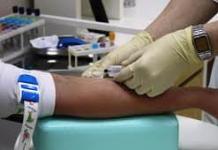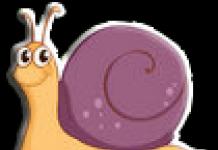Consultation for teachers
Advanced pedagogical experience of the educator:
Study, generalization, dissemination and implementation
As a rule, in most preschool institutions this is the most difficult to implement section of methodical work with personnel.
The study of best practices can be organized by the head or senior educator in any preschool institution, even if it has worked for 1 year, provided that the team has at least several experienced teachers. Learning from experience cannot be spontaneous. It is built on the basis of the high indicators revealed during the control of certain types of work, as well as the relevance of the problems facing the given teaching staff. For example, there is work to be done on a new annual task, a new problem has been posed - the integration of education, etc., therefore, it is necessary to identify in advance what is positive in the team.
However, it is not enough just to identify positive experiences and limit ourselves to this. It is also necessary to systematically, purposefully create it, based on the needs of practice and the relevance of tasks. If the necessary experience has not been identified in the preschool institution, it should be created, and above all, according to the problems determined by the educational program in the future for several years.
Starting work on creating experience, you should clearly formulate the topic and set the teacher or the entire team of the group the task of accumulating experience. It is advisable to suggest that the teacher draw up a description of the group based on the topic of experience (knowledge, skills, skills of children, their attitude to the problem, etc.). Based on the analysis of the results, draw up a long-term work plan, in which to determine the conditions that need to be created, the content, methodology and forms of work - classes, conversations, etc.
We offer a structure for creating an experience on some topics using the example of one month. Having developed a long-term plan for the whole year and implemented it, the teacher will be able to analyze and describe his experience at the end of the year. The role of the senior educator is to help him in the selection of illustrative material, to take photographs or videos, and, of course, to help in generalizing and disseminating the experience.
Topic "Formation of grammatically correct speech"
| Forms of work | Content | |
| Work on the word | Work on the proposal | |
| September | ||
| Speech development classes | ||
| Awareness classes | ||
| Other activities | ||
| Didactic games | ||
| Didactic exercises | ||
| Individual work | ||
| Other forms of work | ||
| October | ||
The topic "Familiarization with fiction, the use of theatrical activities"
| Forms of work | Content |
| September | |
| Frontal classes | |
| Excursions, targeted walks | |
| Conversations | |
| Audiovisual media | |
| Educational games | |
| Creative games | |
| Holidays and entertainment | |
| Other forms of work | |
| October | |
The topic "Introduction to the visual arts"
| Forms of work | Content | ||
| Painting | Graphics | Architecture | |
| September | |||
| Frontal classes | |||
| Some of the Other Learning Activities | |||
| Part of the lesson in other sections | |||
| Excursions, targeted walks | |||
| Conversations | |||
| Drawing, modeling, applique, manual labor | |||
| Reading fiction | |||
| Audiovisual media | |||
| Educational games | |||
| Creative games | |||
| Holidays and entertainment | |||
| Other forms of work | |||
| October | |||
The topic "Familiarization of preschoolers with the area"
| Forms of work | Content | |
| September | ||
| Frontal classes | ||
| Use of TCO | ||
| Part of the lesson in other sections of the Program | ||
| Excursions, targeted walks | ||
| Conversations | ||
| Examining illustrations | ||
| Reading fiction | ||
| Use of computer technology | ||
| Didactic games | ||
| Productive activity | ||
| Working with parents | ||
| Creative games | ||
| Holidays and entertainment | ||
| Other forms of work | ||
| October | ||
In the methodological office, it is advisable to arrange an exhibition "To help those involved in the accumulation of work experience" (recommendations for the accumulation of experience, experience on a similar problem, thematic catalogs).
During the year, systematic observation of the teacher's work is necessary, assistance in analyzing the results, selecting materials that reflect experience (audio and video recordings, photographs, etc.).
Having received the positive results of the work done, it is necessary to determine the ways of disseminating the experience. This can be a speech at a teacher's council, presentation of practical materials, lecture notes, long-term plans, showing individual techniques or work systems.
Generalization of advanced teaching experience- an integral part of methodical work. It involves a description of the content of work on a problem, showing the most stable, characteristic, repetitive techniques, approaches, forms of work organization, convincingly showing why these methods and techniques are optimal.
One of the most difficult forms of generalizing the material is a written report at the teachers' council. But there are other, simpler forms of generalization of experience. For example: Show work, open viewing. Teachers are invited to look at the techniques, forms of organizing children, which have become an established norm for this educator, a proven way to achieve high results.
The teacher can speak at a teacher's council, seminar, consultations with a story about the experience, where he will directly share concentrated information in a live presentation, give examples, identify problems, reasons for which difficulties may arise in mastering the technology of experience.
The most difficult form of generalization of experience is its description. It presupposes a deeper level of generalization, reveals the system of work, the origins of experience and the ways of its formation.
An approximate scheme for describing the experience
Practice shows that the most common mistakes in describing experience are:
- The description of a fairly well-known experience, widely presented in the methodological literature, therefore, the description of the teacher does not carry novelty. Such experience is advanced for a given team, but it is more expedient to generalize it in other forms;
- Presentation of thoughts and conclusions of a general nature, the use of theoretical calculations from the literature. Such material can be called a message, an annotation of methodological literature and used to expand the pedagogical horizons of educators;
- The system of leading ideas is not always revealed, the most significant components of the methodology, revealing the logic of experience, the sequence of actions in it by the educator, are poorly identified;
- Superficiality in the description, substitution of work analysis with individual examples and pictures.
Having determined that the created or revealed experience is interesting and new for a given teaching staff, the senior educator organizes work to disseminate it.
Experience presentation forms:
- Speech at the pedagogical council may be accompanied by a demonstration of visual material (children's work, didactic games, etc.);
- Collective viewing;
- School of Excellence (SPE), which is organized by a teacher who has a system of work on a particular issue. It is supposed to conduct several screenings, after each of which the head of the SPE explains why he did this, and not otherwise than what he was guided by in his actions, shows the children's work, his plan, answers the questions of the SPE participants and offers tasks: to use that or another technique, method of organization, etc. Before the start of the next viewing, a conversation is held about what the SPE students managed to use in their practice and what are the results. At the end of the year, the head of the SPE visits the students and analyzes to what extent they have mastered the material. The number of listeners should not exceed 3-4 people;
- A master class is one of the main forms of dissemination of experience, which involves a teacher telling about his creative laboratory and showing on children or modeling on adults the use of certain innovative techniques and ways of organizing children;
- Show-panorama - modeling of various approaches to solving the same or similar teaching and educational tasks, demonstrated sequentially by different teachers. This can be done with children with whom these technologies have been worked, or with adults acting as children;
- A journal of best practices, in which each teacher describes the "highlights" of their work on a particular issue and gets acquainted with the experience of colleagues, after which a discussion and assessment of the material is held;
- Presentation of materials in the teaching room, which is also a form of sharing experience. These can be synopses of a cycle of classes on a topic, long-term plans of work on a problem or topic, author's didactic games and other visual materials;
- Creative report, during which the following takes place:
Demonstration of fragments of experience - activities of different types, work in everyday life;
Showing the elements of pedagogical technology (sequence of actions);
Clarification of the features of pedagogical technology in conversations with the author of the experience;
Collective analysis viewed under the guidance of a senior educator;
Study of teaching materials and business documentation;
Thematic and personal exhibitions of the author of experience;
Meetings with children with whom the author of the experiment worked;
Familiarization with the conditions in which the work was carried out;
A discussion based on the results of observations, during which it is necessary to highlight the elements of experience that can be used by other teachers, to determine in what conditions the experience can be effective; determine which materials from the reviewed will be of interest to teachers and can be published, presented in the methodology room, etc.
Showing fragments of the teacher-master's work - individual lessons, work in everyday life, materials, manuals, recommendations developed by the innovative teacher.
The introduction of best practices can also be organized in any institution, regardless of the qualitative composition of the staff, since the use of the experience of colleagues of your own or another preschool institution can significantly improve the work of a given teacher and the team as a whole. Therefore, the preschool institution should have information about the experience in the district, city, country, abroad. This information can be reported at the teachers' council, presented at the exhibition in the methodological office with recommendations for the implementation of the experience.
With the educators who will introduce the experience, a work plan is drawn up, including the study of this advanced experience, the study of the theory of the issue and the drawing up of a long-term plan for the implementation of the experience, that is, determining the forms and types of work that the educator will use.
To systematize work on best practices, it is advisable to draw up a long-term plan
| Age group | 2007-2008 academic year | 2008-2009 account year | 2009-2010 account year |
| 2 younger group | AND. |
O. Using game techniques when getting to know the environment |
R. Using game techniques when getting to know the environment |
| Average | |||
| Older | V. An integrated approach to working with children on the topic "Space" |
WITH. Development of creativity in modeling lessons |
|
| Preparatory group | WITH. Familiarization of children with the dial and the determination of the time by the clock |
||
Legend:
C - creation of experience.
And - learning from experience
О - generalization of experience.
R - the dissemination of experience.
B - implementation.
Material description: I offer you information from the experience of working with older preschool children. This material will be useful for teachers of older groups Methodological development, will help develop theatrical abilities in children.
Information from work experience "Development of theatrical activities with children of senior preschool age"
Kindergarten theater - this is, on the one hand, a game, an accessible, interesting and emotionally pleasant activity for the child, and on the other hand, it is a powerful means of correction and all-round development of the baby. Interacting with other characters, the child learns to coordinate his actions with the actions of partners, learns to feel a dialogue partner, listen and hear him, feelings and emotions are enriched, the kid worries about the heroes of the fairy tale, “lives” their life. The theater reveals the inner world of a child, removes the burden of "tightness", liberates the most shy children. Thus, theatrical activity helps the formation of a more stable emotional-volitional sphere in children - will, endurance and self-control are formed; the child learns to control his emotions, to regulate behavior depending on the current action. In the process of practicing the dialogues of the characters, the vocabulary is activated, the sound pronunciation, intonation and expressiveness of speech are improved, children learn to build dialogues and use them in various situations. Thus, we can say that theatrical activity makes it possible to comprehensively overcome problems in the development of children's speech. On stage, the child has to focus and hold it for a relatively long time, which contributes to the development of arbitrary attention, the ability to concentrate on a specific episode. With the development of attention, children get the opportunity to direct their consciousness to the main features of the plot of a literary work, to the traits of the characters of the heroes. No less important is the formation of voluntary memory in preschool age. Children memorize the text, their roles, the sequence of actions, they know when it is their turn to enter into a dialogue. The child learns to set himself a mimic task and look for ways to implement it. Children's knowledge of theater as a form of art deepens, their horizons expand, children's ideas about the surrounding reality, which contributes to the development of the child's cognitive sphere. Through theatrical and playful activities, the child learns to see the beauty in life, the ethical and moral foundations of consciousness are laid. The special value of theatrical activity is that it involves the integration of several educational areas, and this is a necessary condition for organizing the educational process in the context of the introduction of Federal state educational standards. According to the new FSES, educational tasks are most effectively solved when the teacher purposefully uses an integrative approach when organizing the educational process. Theatrical activity integrates the following educational areas: Cognitive development, children's knowledge of theater as an art form deepens, their horizons expand. Speech development, there is a development of all aspects of speech. The vocabulary is activated, sound pronunciation is improved, children learn to build dialogues."Reading fiction". Through acquaintance with works of art of various genres, children are introduced to verbal art, the development of literary speech, the development of artistic perception and aesthetic taste. Artistic and aesthetic development. In the process of joint production of attributes, elements of costumes for the fairy tale chosen for playing with the children, the children develop productive activities of children, develop children's creativity, and become familiar with the fine arts. Through listening and discussing folk, classical, children's music, singing together, playing musical instruments, children develop musical abilities, the ability to emotionally perceive music, and they become familiar with the art of music. Children are included in the system of social relations through the images of their heroes. They “live” the life of their character, “try on” his character, learn to evaluate the actions of the heroes of a work of art. But in order for a preschool child to show theatrical creativity, it is necessary to enrich his life experience with vivid artistic impressions, to give the necessary knowledge and skills. For this I have carried out the following work:
In the group, I equipped a theater corner, as well as a "quiet corner" where a child can be alone and rehearse a role or view illustrations for theatricalization. Since the subject-developing environment should ensure the right and freedom of choice for each child to theatrical In the area of theatrical activity, I placed different types of puppet theater - finger, b-ba-bo, as well as masks, props, puppets, decorations. In addition, I periodically updated the material, focusing on the interests of different children. This created the conditions for personalized communication with each child. Since the development of curiosity and research interest is based on creating a range of possibilities for modeling, searching and experimenting, in the area of theatrical activity, I placed various natural and waste materials, fabrics, costumes, for a mummer. Taking into account the gender-role characteristics of children, equipment and materials that meet the interests of both boys and girls were placed in the area of theatrical activity.
Theatrical classes simultaneously perform cognitive, educational and developmental functions. Therefore, through their content, form and methods, I strove to achieve three main goals: - the development of speech and skills of theatrical and performing activities; - the creation of an atmosphere of creativity; - the social and emotional development of children. The content of my studies was not only acquaintance with the text of a literary work or fairy tale, but also with gestures, facial expressions, movements, costumes. The most important methodological principle was the practical action of each child. When reading or telling something, I tried to express the sincerity and genuineness of my feelings for what I read or told. But in no case did I try to impose my assessments and relationships. On the contrary, it provided children with the opportunity to express themselves, to show emotional activity, tried not to suppress a timid child, turning him only into a spectator. I tried to prevent children from fear of a mistake, so that the child was afraid to go on stage. Therefore, when inviting a child to “play” or “show” something, I proceeded from the real possibilities of specific children. To more vividly reveal their capabilities and talents in theatrical activities, children must acquire many skills and abilities. To relieve muscle tension, I used the following exercises: "Say hello to each other by both hands alternately", "Find your friend with your gaze", "Do not mix up the movements"; games: "Cabbage", "Rebuild for growth." Finger game training: "Utrechko", "Boy - finger, where have you been?" Goodbye helps develop fine motor skills.
To teach children the means of speech expressiveness, I used articulatory gymnastics: "Mom shreds cabbage", "Snake sting", "Horse", "Clean teeth", "Start a motorcycle". She invited the children to pronounce the most familiar words with different intonations: “take”, “bring”, “help”, “hello” (friendly, careless, begging, demanding). She drew the children’s attention to how the meaning of the phrase could be changed by rearranging the logical stress (each time on a different word): “Bring me a toy”, “Mom went to work”. I also used tasks - exercises "Different moods", "I am happy when ...", "I am sad when ..." To develop diction, I used tongue twisters, games "Tell me a word." children complete "Short Stories" for example:
1. The boy returned home from a walk, his mother meets him and says: “And I have news for you” What news can my mother have?
2. The boy says to himself quietly: "How scary!" What can he be afraid of?
3. What can one pencil think while lying in a box of pencils?
For a more vivid image creation, children need to master expressive plasticity and facial expressions.
For the development of plastic expressiveness, I offered children:
1. Walk over the pebbles across the stream on behalf of any character (fairy tale, story, cartoon) of their choice.
2. On behalf of any character, sneak up on a sleeping animal (hare, bear, wolf).
3. To depict a walk of three bears, but so that all bears behave and act differently.
When performing these exercises by children, I made sure that the children themselves noticed the differences in the performance of their friends and tried to find their movements, facial expressions.
The children especially liked the exercises for the development of expressive facial expressions:
1. Salty tea.
2. I eat lemon.
3. Angry grandfather.
4. The light is off and on.
5. Dirty piece of paper.
6. Warm - cold.
7. Get angry with the fighter.
8. Offended.
9. I'm sad.
10. Show how the cat begs for sausage.
I also suggested that the children act out small scenes where it is necessary to emphasize the features of the situation with facial expressions. For example, to depict how a boy was presented with a new car or how a child was scared of a bear. The development of the creative activity of children was facilitated not only by classes in theatrical activities, but also by individual work with each child.
I built my classes according to the scheme:
- introduction to the topic, creating an emotional mood;
- theatrical activity (in different forms), where the teacher and each child have the opportunity to realize their creative potential; - an emotional conclusion that ensures the success of the theatrical activity.
To develop self-confidence and social skills of behavior, I tried to organize the theatrical activities of children in such a way that each child had the opportunity to prove himself in some role. For this, I used a variety of techniques: - the choice of a role by children at will;
- appointment to the role of the most timid, shy children; - distribution of roles according to cards;
- playing roles in pairs.
Children are always ready to play fairy tales. This is their way of knowing the world. In a creative atmosphere, a child develops faster and more fully. Entering a fairy tale, he gets the role of one of its heroes, involuntarily absorbs into himself, that attitude to the world, which gives strength and resilience in the future life. Theatrical activity allows you to form the experience of social skills of behavior, since each fairy tale has a moral orientation. As a result, the child learns the world with his mind and heart and expresses his attitude to good and evil. Favorite heroes become role models. Also in my practice I widely use such a form as making attributes for a future performance, children draw, cut out what is needed.
Since the development of the theatrical activity of children and the accumulation of emotional and sensory experience by them is a long-term work, the participation of parents was required. For them, I consulted, gave advice and recommendations. I updated the material in the corner for parents, trying to find interesting and accessible games, tasks, exercises that they could use at home on their own. She also organized exhibitions of games, exercises, tasks for the development of motor skills, the development of speech, intonational expressiveness, imagination, thinking, memory. Themed evenings "Christmas", "What does autumn give us?" Were organized for the parents, in the preparation of which they took an active part (making costumes, masks, decorations).
The basics of dramatization and acting were consolidated and revealed in musical lessons, in independent theatrical activities, at holidays and entertainment.
Requirements for design and presentation
teaching experience
Modernization of the preschool education system, granting the right to choose variable programs, methods of upbringing and teaching, development of copyright programs and techniques require constant self-improvement from teachers.
Unified qualification reference book of positions of education workers 2009. makes demands "aimed at increasing the productivity of their work, labor activity, business initiative and competence, the fullest use of their professional and creative potential."
A modern teacher needs to be competitive, to be able to prove the level of his qualifications and professional growth.
The administrative regulations for the provision of state services to the Ministry of Education and Science of the Chelyabinsk Region for the certification of teachers of regional state and municipal educational institutions determine the procedure for certification of teachers for the first and highest qualification category.
The level of professional and pedagogical qualifications is determined on the basis of expert assessment of the products of professional and pedagogical activity.
Expert assessmentquality of real actionis carried out through the observation of the teacher's actions at the level of a block of everyday learning situations, united by an educational topic, a methodological topic.
Expert assessmentquality of methodological developmentsin the form of educational materials, descriptions various organizational forms, methods, techniques and training tools, created by the teacher in the system of methodical and scientific-methodical work, is carried out through work with documentation. Thus, it is carried outindirectlydetermination of the level of theoretical, methodological, psychological, pedagogical and other basic knowledge of the teacher, used in the implementation of actions and the creation of products.
Self-education- the most important factor in improving the professional level of teachers. This is a purposeful cognitive activity controlled by the person himself.
Each teacher is obliged, during the academic year or another sufficiently long period, to study in depth either the problem in the solution of which he feels certain difficulties, or the one that arouses the greatest interest.
Self-education as a constant activity of a teacher includes
- research work on a specific problem;
- visiting libraries, studying scientific, methodological and educational literature;
- acquaintance with the work of their colleagues, exchange of views on the organization of the pedagogical process, methods of upbringing and teaching children;
- development and testing of a system of work for a specific section of the education and training program;
- creating your own teaching aids, attributes for children's games, etc.
The result of self-education can be the design of the advanced pedagogical experience of educators.
Volobueva L.M. singles outthree main approaches to the interpretation of advanced teaching experience:
- As an example of good work that gives high results in comparison with other teachers.
- As an activity in which experimental work is implemented, the conclusions of scientific research and thanks to this, fundamentally new results are achieved.
- As innovation with his creative findings, the discovery of new, original knowledge.
Korepanova M.V. proposes the following PPO forms:
- pedagogical diaries;
- abstracts or abstracts of speeches at meetings, etc .;
- articles in pedagogical publications;
- report;
- brochure;
- monograph;
- methodological development of plans, etc., which contain ways of solving specific educational problems by the teacher.
The structure of the description of work experience and the requirements for its design.
Title page - 1st page of qualification work. The full name of the educational institution is indicated at the top of the page; in the center - the title of the abstract, which should be specific, reflect the essence of the work. Vague formulations are not allowed, for example: "Analysis of some issues ...", "On the question of ...", "Materials ...". Below on the right - full name, position, defending work experience; in the lower part in the center - the place and year of the work.
Introduction - a very important part of the work, where the relevance of the chosen topic is substantiated. Coverage of relevance should be laconic, it is enough to show the main thing - the essence of the problem situation, from which the relevance of the topic will be visible. The problem is often equated with a question, i.e. with the position to be resolved. The problem is considered to be a precise question, only the most important and difficult one.
From the formulation of the problem, it is necessary to move to the formulation of the goal, to indicate the specific tasks to be solved in accordance with the set goal. This is done in the form of a listing (study ..., describe ..., install, identify ... etc.).
The formulation of tasks should be done as carefully as possible, since the description of their solution should be the content of the chapters of the abstract. This is also important because the titles of such chapters are born precisely from the formulations of the tasks of qualification work.
Theoretical justification- in this part, an analysis of scientific and pedagogical literature is given, reflecting the state of the selected problem. The choice of literary sources must be reasoned. Theoretical provisions should help substantiate the prerequisites for their implementation in practice.
Practical part- here it is necessary to show the formation of the experience itself, describe it in motion, identify the difficulties and obstacles that arise on its way to the goal, ways to overcome them. In this case, special attention should be paid to the description and analysis of the new, original.
Conclusion - it is important to reflect the results achieved. In this part, the advantages of the work methodology are shown, conclusions are given on its results (both positive and negative points are noted). In accordance with the conclusions, the prospects for further work are formulated.
Literature - the list of references indicates
Full and exact title of the book without quotation marks, put a full stop;
After the dash, place of publication (Moscow - Moscow, full names of other cities);
Year of publication without the word "year".
Applications, where materials are posted that clarify the text of work experience, some data, examples, etc. Applications are grouped and numbered, for example: "Appendix 1".
The main task of generalizing the application software is to reveal the ways, techniques by which the teacher has found an effective solution to professionally significant problems that are problematic in nature, it is important to determine why it is better to act in this way and how it affects the development of the child.
Used Books:
- Unified qualification reference book of positions of managers, specialists and employees. Section "Qualification characteristics of positions of educational workers", according to 1.3 Appendix to the Order of the Ministry of Health and Social Development of the Russian Federation of 14.08.2009, No. 593
- Administrative regulations for the provision of state services to the Ministry of Education and Science of the Chelyabinsk Region for the certification of pedagogical workers of regional state and municipal educational institutions. Approved by the Decree of the Government of the Chelyabinsk region of September 16, 2011,
No. 318-P
- Golitsina N.S. Certification of teachers of a preschool educational institution. M., 2006.
- Korepanova M.V., Lipchanskaya I.A. Certification of pedagogical and administrative staff of preschool educational institutions. M., 2005.
- Certification of managers and teachers of preschool educational institutions: guidelines and materials / Auth.-comp. T.S. Komarova et al. M., 2006.
- Volobueva L.A. The work of the senior educator of the preschool educational institution with teachers.
The urgency of the problem of speech development In the activities of people there is no area where speech would not be used, it is needed everywhere, and especially at the stage of training. The success of training depends on the quality of speech. Pure, correct speech is one of the most important conditions for the normal mental development of a person. With the help of speech, communication, the child easily and imperceptibly for himself enters the world around him, learns a lot of new, interesting, can express his thoughts, desires, requirements. But, unfortunately, at present, children are increasingly experiencing speech disorders, which sharply limit their communication with people around them. Figurative speech rich in synonyms, additions and descriptions in preschool children is a very rare phenomenon, therefore, a huge responsibility for the formation of speech falls on educators, speech therapists, and teachers. The development of coherent speech is the most important condition for the successful teaching of children in kindergarten and preparation for schooling. Therefore, preschool teachers need to pay close attention to this problem and find innovative methods and ways to solve it.
Purpose: The development of correct coherent speech among preschoolers 3-6 years old through retelling works of art, dramatization games, composing creative stories, using mnemonic techniques in the pedagogical process for the development of coherent speech of preschoolers.
Tasks: Educational To teach children to retell works of art, compose the simplest stories, fairy tales, construct phrases grammatically correctly, formulate their content, replenish the children's dictionary - pay special attention to its quality side, increase the stock of verbs, adjectives, synonyms, antonyms, etc. .d .; help the child as actively as possible to include these words in independent speech. Developing To develop the ability to freely reason, ask, draw conclusions, reflect various connections between the phenomena of the surrounding life and objects. Develop thinking, observation, perception of the child. Educational To foster love for Russian folk works and works of other peoples, love for the native language.
SPEECH DEVELOPMENT METHODS Visual Verbal Practical Direct observation method and its varieties: observation in nature, excursions followed by telling about the acquired experience. The method of direct observation and its varieties: observation in nature, excursions followed by telling about the experience gained. Indirect observation (pictorial visualization): examining toys and paintings, telling from toys and paintings Indirect observation (visual visualization): examining toys and paintings, telling from toys and paintings Summarizing conversation Telling by mnemonic schemes Memorizing by mnemonic schemes Retelling by mnemonic schemes Games Games Dramatization Didactic exercises Didactic exercises Narrative based on visual material Narration without reliance on visual material
The development of coherent speech through training in composing stories from a picture and a series of plot pictures. Purpose: Formation of skills and abilities in composing stories based on a picture and plot pictures; Enrichment of the vocabulary and the formation of the grammatical structure of the speech of children in the process of working with a picture and plot pictures. Series of paintings and subject pictures: Winter; Winter fun Moms and kids; Wild animals; Pets; Animals on the farm Tell children about bread Road transport Birds Dishes Fruits, vegetables Visual-didactic guide to artistic creativity

GCD "Travel to the land of fairy tales" Program content: To teach to build the correct answer to the question posed by the teacher, to answer with a full sentence. To educate the intonational expressiveness of speech, to train children in the clear pronunciation of sounds. Develop cognitive activity, enrich the vocabulary. Learn to select pairs of words - antonyms, exercise in the formation of the names of baby animals in the singular and plural. Arouse the desire to actively participate in the general conversation. Course of the lesson: Educator: Children, look what is it in the sky? Children: The sun. Educator: What is the sun today? (children's answers) Music 1. The sun has risen (circular movement in front of him) Morning has come 2. Morning has come (children waving their hands) Birds woke up 3. Birds sang (hands up - stretched) Children woke up 4. Children woke up (children smile at each other) The educator smiled at each other: Guys, the sun invites us to travel! Do you agree? Children: Yes! Educator: Then let's go to the land of fairy tales. And what are we going to take? What you can travel on, suggest (children list the types of transport). Let's take a train. I'll help you. I will say magic words and you will turn into a beautiful train. CREX PEX FEX (children ride), imitating a train with a song). Educator: So we drove up to the land of fairy tales. A fairy tale, a fairy tale-joke To tell it is not a joke Whatever the fairy tale comes first As if a river babbling So that by the end neither old nor small Do not fall asleep from her

Educator: And here is the fabulous gate through which we must go to the land of fairy tales. In order for them to open, you need to tell a nursery rhyme. (children tell nursery rhymes, and the guys enter the land of fairy tales to the music.) There is a house and a bunny sits next to it and cries. Educator: Who are these children? Children: It's a bunny. Educator: What happened to him? (children's answers) Bunny: How could I not cry I had a bast hut. Spring-Red came, Lisa asked to see me, and she kicked me out. Help me guys. Educator: Let's help Bunny. But first, let's remember what this tale is called. Children: Zayushkin's hut. Educator: And who wanted to help the Bunny in trouble? Children: (list: Dog, Wolf, Bear, Rooster) Educator: And which of them drove the Fox out? Children: Cockerel. Educator: So let's call Rooster so that the fairy tale ends well. Children are reading the nursery rhyme "Golden comb cockerel". Cockerel: Ku-ka-re-ku, what happened? Educator: Children, explain to Cockerel what happened (children explain) Cockerel: So I'll kick her out. Bunny: Thank you guys for your help. And here's a gift from us. Goodbye. Educator: And now sit down in the clearing and play the game "On the contrary". I will say the word, and you have to say the opposite word. (Game: Clean-dirty; Merry-sad; Sweet-bitter; Evil-kind; Big-small; Old-young; Hot-cold; Light-heavy; Fast-slow) Educator: Well done, played well. Educator: Children, do you hear? (music sounds, Goat sings) Educator: Guess who is singing this? For whom? And why? (children's answers). Educator: Who overheard the song? What for? Have the kids opened for him? And how did they answer him? (children's answers) Educator: Then tell me what is the name of the fairy tale? (children's answers)

Educator: And now we will play another game "Name the animal children." Guys, listen carefully and answer correctly. The gray mouse has a small (answer: mouse) The cat has fluffy (answer: kittens) The squirrel has red (answer: squirrels) The dog has playful (answer: puppies) The cow - affectionate (answer: calf) The pig - toothy (answer: pig) The horse has (answer: foal) The goat has a funny (answer: goat) The sheep have curly ones (answer: lambs) And mom and dad have funny ones (answer: guys) Educator: Well done, they did well. Well, we are going further. Children, we came to the bridge, not simple, but magical. You need to guess riddles. 1. Snow in the fields, ice in the waters, blizzard walks, when does it happen? (in winter) 2. Shaggy, mustached, drinks milk, mur-mur sings (cat) 3. In summer, a gray fur coat, and in winter a white one, wears a bouncy, fearful (bunny) Educator: What good fellows you are, walk along the bridge and sit in the clearing, (children retell the fairy tale "Teremok") Educator: Children, did you like the trip with the sun? What did we do good today? (children's answers) The sun is wonderful, Very interesting, It sang and played with us, He gave us assignments, But it's time for the sun to move on And it's time for us to return to kindergarten. (children on the "train" return to kindergarten)

The development of children's speech and thinking through mnemonics Mnemonics is a system of methods and techniques that ensure the successful mastering of knowledge by children about the features of natural objects, about the world around them, effective memorization of the structure of a story, preservation and reproduction of information, and of course the development of speech.
The main tasks of mnemonics: 1. Development of all types of memory: - visual; auditory; associative; verbal and logical; - processing of various memorization techniques. 2. Development of logical thinking (ability to analyze, systematize). 3. Development of imaginative thinking. 4. Solving various educational, didactic tasks, familiarizing with various information. 5. Development of ingenuity, training of attention. 6. Development of the ability to establish cause-and-effect relationships in events, stories. Mnemonic tables - diagrams serve as didactic material when working on the development of coherent speech of children, to enrich vocabulary, when learning to compose stories, when retelling fiction, when guessing and guessing riddles, when memorizing poetry.

Development of speech by means of didactic play Didactic play develops the speech of children: it replenishes and activates the vocabulary, forms the correct pronunciation of sounds, develops coherent speech, the ability to correctly express one's thoughts. In the group there are such games as: "Words in reverse" "What will happen" "Tell it correctly" "Stories from pictures" "Which, which, which?" "Speech therapy loto" "Professions" "Who lives in the house?" "Collect a nursery rhyme" "Collect a proverb" "Play loto" "My first sentences" "Big - little Who does what" "Short words" "Seasons"

With the help of didactic games, the vocabulary of children is enriched. They are also used to consolidate the vocabulary of children (nouns, adjectives, verbs, color names, spatial concepts, prepositions, etc.). Speech, memory, attention, logical thinking, visual memory develop. The culture of behavior and communication skills are strengthened.

Theatrical activity - makes the life of children interesting and meaningful, filled with vivid impressions, the joy of creativity, introduces children to the world around us in all its diversity through images, colors, sounds, and skillfully posed questions encourage them to think, analyze, draw conclusions and generalizations, develops speech of children, there is an opportunity for self-realization. The speech of children becomes figurative, expressive. In the process of working on the expressiveness of the characters' remarks, their own statements, the child's vocabulary is imperceptibly activated, the sound culture of speech and its intonation structure are being improved. The role played, especially entering into a dialogue with another character, puts the child in front of the need to express himself clearly, clearly and understandably. In children, dialogical speech, its grammatical structure, improves. Mimicry and gestures become artistic, children gain self-confidence, the ability to maintain attention in accordance with the plot of the play; the consistency of thinking develops. By the age of five, children easily play up Russian folk tales, stories of writers, poetry, and try to compose poetry. The group includes such types of theater as: Finger theater Plane theater Mittens dolls Children's costumes of fairy tale characters are also used.

Excursions as a method of developing children's speech The purpose of excursions is to clarify and enrich the active and passive vocabulary of children, the development of coherent speech of children, and expanding children's ideas about the world around them. Development of curiosity and observation.

Working with parents Conversations are held, recommendations are given for memorizing poems, riddles, proverbs, nursery rhymes, counting rhymes, tongue twisters, and phrases with children at home; advice and advice on what books should be read to children of different preschool ages; themed parent-teacher meetings are organized.


Master - class for parents "Playing, we develop the speech of children." Educator: In order to engage in the development of speech of preschoolers on your own, it is not at all necessary to turn classes into school lessons. There are many games, simple exercises for the development of speech in children, which are easy to use on the way to kindergarten, on a walk or before bedtime. The development of the speech of preschoolers in the game is also an additional emotional connection between you and your child, it is the joy of communication, the formation of trust and friendship. Now we are going to play these games: "Word chain" Purpose: enrichment of the vocabulary of adjectives. The essence of this game for the development of speech of preschoolers is the selection of words of nouns and adjectives united by any sign. That is, the child, with your help, makes a kind of chain of words that are logically connected with each other using transition questions. For example, the original word is "cat". You ask the question: Educator: What kind of cat is it? Parent: Fluffy, affectionate, colorful ... Educator: What else is colorful? Parent: Rainbow, dress, TV ... Educator: What else can a dress be? Parent: Silk, new, direct ... Educator: What else can be direct? Parent: Line, road, sight ... etc. "Say the opposite" Purpose: to expand the vocabulary of antonyms. For this game we need a ball. We throw the ball to the child and say the word. The child, returning the ball, calls the word opposite in meaning. Now we will turn into stubborn people who do the opposite. I throw you a ball and call a word, and you say the other way around. For example: dark, but vice versa - light. FRIEND ... Enemy, DAY ... NIGHT, JOY ... Sadness, Heat ... COLD, EVIL ... GOOD, TRUTH ... LIE, GOOD ... BAD, HARD ... EASY, HIGH ... LOW, IT'S POSSIBLE ... DON'T, HARD LIGHT ... EASY ... EASY ...

"My fingers will tell" Educator: Scientists believe: the more active and accurate the movements of the child's fingers, the faster his speech develops. Children learn text better if they associate it with gestures and facial expressions. This should be taught to them by adults, but first they must master such techniques themselves. The teacher invites parents to unite in pairs and decide who will be an adult and who will be a child. “Fingers - a friendly family” Repeat the name of the fingers with the child before doing the exercise. Let the fingers of one hand "say hello" to the fingers of the other hand, calling them: large, index, middle, ring, little fingers. Fingers are a close-knit family, they cannot be without each other. (We clench the fingers of each hand into fists and unclench them.) Here is a big one! And this is average. Nameless and last - Our little finger, babies! Ooh! The index was forgotten. So that the fingers live together, (We alternately raise the fingers of both hands up.) We will connect them AND perform movements ... (We attach each finger of the hand in turn to the thumb.) We will show the horns of the goat (Play with our fingers. Move the index finger and little finger forward, bending the rest of the fingers; then we raise the horns to the head.) And the antlers of the deer even ... (We spread the fingers of both hands wide, crossing our arms, raise the branchy antlers to the head.) "Find by color" Purpose: to consolidate the agreement of the adjective with the noun in gender and number. For this game we need pictures with objects of different colors. We name a color using an adjective in a certain form (gender, number), and the child finds objects of a given color that fit this adjective form. For example: Red - an apple, an armchair, a dress; Yellow - turnip, paint, bag; Blue - cornflower, eggplant, pencil. At the end of the master - class, the teacher hands over to all the parents present a memo "Playing with the whole family."

Career experience
Sorokina Galina Nikolaevna
MKDOU kindergarten number 5 "Alenushka"
I think that today no one needs to be convinced that the sooner we introduce a child to the rules of the road, teach him the skills of a culture of behavior on the streets and roads, the less accidents on the roadway will be.
That is why it is necessary to teach children safe behavior on the streets, roads, in transport and traffic rules from an early age.
The purposemy work is the formation of safe behavior in preschool children through familiarization with the rules of the road.
Getting started teaching kids about the rules of the road, set the following tasks:
1. Expand children's understanding of the road environment and road rules.
2. To acquaint children with the meaning of road signs, to teach them to understand their schematic representation for the correct orientation on the streets and roads.
3. To develop the ability to practically apply the knowledge gained in the road transport environment.
4. To foster discipline and conscientious observance of traffic rules, a culture of behavior in the road transport process.
5. Step up efforts to promote traffic rules and safe lifestyles among parents.
She trained preschoolers in traffic rules in the system. She worked in three stages:
- The first stage is preparatory: clarifying the ideas of children about the Rules of the road, studying the knowledge and skills that children have on traffic rules.
The second stage is practical: the expansion of the initial children's ideas, the accumulation of new knowledge about the Rules of the road.
- The third stage is evaluative: the formation of a conscious attitude towards compliance with the rules of the road.
She has been conducting educational activities to teach children the rules of the road for 3 years.
Educational activity on teaching children the rules of the road began with the first junior group, when conducting classes on the rules of the road, having a minimum of road symbols and attributes.
In the first youngest group, children were taught to distinguish between red, yellow and green. At the same time, she explained to the children that red and green colors correspond to traffic signals for pedestrians. The red signal prohibits movement, and the green one permits. She played games appropriate for the age of the children. During the game "Red - green" she explained that if he shows a red circle, you have to stand, and if it is green, turn your head left and right, and then walk. So she reinforced the habit of looking around before entering the roadway, even at a green traffic light.
In the second youngest group, she continued to acquaint children with various types of vehicles: trucks and cars, route vehicles (buses, trolleybuses, trams). The guys looked at the illustrations depicting cars, watched the transport while walking. They already know that vehicles have different "dimensions". Here, the child's ability to "see" a large vehicle (standing or slowly moving) as an object that can hide a danger was appropriate. below), their sizes, and also teach how to compare objects by these parameters. Talking about the purpose of route vehicles, she introduced children to the rules of behavior in public transport. Learning how to behave correctly on public transport should become a habit.
In the middle group, she taught children to orientate themselves on the terrain, namely, on the territory of the kindergarten. She explained that you cannot go beyond it on your own. Expanding the knowledge of preschoolers about vehicles, their types and design features. I showed the children those parts of the street on which pedestrians are safe: the sidewalk, the pedestrian crossing, along which, holding an adult by the hand, you can cross the carriageway. In the classroom, she gave the task to compose a story about the road situation. For example, the guys can tell how they drove in a car (bus). Or how they walked to kindergarten. At the same time, she unobtrusively reinforced the children's understanding of which places on the street are dangerous, and also found out how well the children know road vocabulary. She used illustrative material in her explanations: books and posters depicting dangerous situations, as well as various instructions on behavior near the roadway. She consolidated the concepts of "sidewalk" and "roadway", introduced children to the places of movement of cars and people, practiced the skill of walking on the sidewalk, adhering to the right side.
I made an acquaintance with the pedestrian crossing and its purpose. Children learned to find it in illustrations in books, on models. Explained to the children the importance of correct behavior at the pedestrian crossing itself and when approaching it (stop at some distance from the edge of the carriageway, carefully examine the carriageway, turning your head to the left and then to the right, when driving to the middle of the road, control the situation on the left, and from the middle of the road - on right).
During practical training, I regularly practiced the skills of crossing the carriageway. To this end, she held the games "The best pedestrian", "The pedestrian is a good fellow".
In the learning process, she approached children in a differentiated manner, taking into account their individual capabilities.
Teaching children the rules of the road, I used all available forms and methods of work.
In the older groupideas about traffic rules in children were consolidated and supplemented.Organized and carried out integrated educational activities through various activities to familiarize children with the rules of the road. In the game and productive activities I used mock-ups according to the rules of the road.
In communicative and cognitive-research activities, she gave children ideas about various types of transport through viewing pictures ("Transport", "City Street", "Children and the Road"), watching cartoons, conversations, learning poems, reading stories, making riddles.
In productive activities, my children and I drew, sculpted, depicted various types of transport in applications; in their constructive activities, they created various buildings and structures from building material.
In motor activity, she continued to develop in children coordination of movements and orientation in space through outdoor games: "Colored cars", "Red, yellow, green", "Pass the baton", "Where we were, we will not say what we were driving, we will show you." , "Fastest", etc.
In musical and artistic activities, children took an active part in holidays, entertainment according to traffic rules.
I paid much attention to familiarization with road signs, first of all WARNING: "pedestrian crossing", "children", "animals on the road", "railway crossing with and without a barrier."
Then, with the PROHIBITS: "pedestrian traffic is prohibited", "bicycle traffic is prohibited", "entry is prohibited." During the games, we learned the PRESCRIBING signs: "roundabout", "straight ahead", "right", "left". As well as INDICATIVE: "pedestrian crossing", "parking place", "medical aid point", "telephone". I drew the attention of children to the fact that the sign "pedestrian crossing" is warning and indicative. He warns drivers about a pedestrian crossing, and shows pedestrians where to cross the carriageway.
To consolidate knowledge, I used targeted walks, excursions, conversations, outdoor games, logical tasks, reading fiction, didactic games, board games and games with a street layout. Introduced the children to the work of a traffic controller. She explained in what conditions the traffic controller controls the traffic, why he needs a baton, why the traffic controller stands in the center, in a playful way she introduced the children to the traffic controller's gestures: “stop”, “attention”, “the way is open”.
Parents' meetings: "Child and traffic rules", "Children's safety on the street." At parent-teacher meetings, she told parents about the events, conversations, education and training in safe behavior on the street held in the preschool institution; she introduced parents to the program requirements for teaching children the rules of the road, talked about the importance of the example of adults, about the need to comply with the rules of behavior on the street. Any minor violation committed by an adult is a bad example for the child. Parents should pay great attention to children's compliance with the rules of conduct on the street. When crossing the street with a child, adults should definitely hold his hand. Otherwise, the child may become afraid of an approaching car and suddenly run across the road, putting himself in danger. The correct example of the behavior of adults on the streets and roads greatly contributes to the successful mastery of the alphabet by children of the road traffic, the education of literate pedestrians.
- carried out joint activities with parents on the prevention of road traffic injuries. This is an entertainment "Every little child should know traffic rules from the cradle", the lesson "Traffic signs everyone should know."
Questionnaire for parents to study their attitude to the study of traffic rules by children.
Attracted to making attributes, didactic games in the corner of the road;
Drawing up route sheets "My road to kindergarten".
I am constantly promoting work to familiarize with the rules of the road in the family. The material is being updated in the parent's corner. I conduct individual conversations with parents. I would like to draw the attention of parents to take a serious look at the acquisition of solid knowledge and skills of behavior on the street by their children.
The result of work on traffic rules
In conclusion, I would like to note that the work does not end there. Every year babies come to us, and our task is to prepare them for life in society, to warn against danger on the roads. The interest in the "road problem" among the pupils of our kindergarten and their parents is growing, because we, teachers, are not indifferent to this.During the diagnostic examination of children, the level of knowledge at the beginning of the year was 1.9 points.
B - 0%
C - 52.4%
H - 47.6%
The level of knowledge of children at the end of the year was 2.4 points.
B - 23.8%
C - 76.2%
H - 0%
Summing up the results of their work on teaching children traffic rules, the following can be noted:
Children learned to orient themselves well on the streets adjacent to the kindergarten;
When crossing the carriageway, they became attentive and careful;- expanded their knowledge of the rules of the road, types of transport, road signs, and also gained knowledge about the observance of the rules for using a bicycle, scooter, behavior in transport and at stops;
- know how to behave on the street, guided by the rules of the culture of behavior in public places, because have a clear idea that the rules prescribed to pedestrians, passengers, drivers are aimed at preserving their life and health, so everyone is obliged to follow them.
The vocabulary of children has been replenished.Throughout their education, children developed a desire to learn about the objects of the world around them, children learned to draw simple conclusions, establish cause-and-effect relationships.
Parents' education gave a big plus in the social education of the children of the group.In the future, I plan to continue working in this direction: to develop scenarios for conducting classes, entertainment, holidays, leisure activities, memos on traffic rules.
I am sure that the knowledge of road traffic knowledge acquired in kindergarten will help preschoolers to become more disciplined and independent in the future.
Literature
1. L.A. Vdovichenko "Child on the street". Saint-Petersburg "CHILDHOOD-PRESS", 2008
2. EA Romanova, AB Malyushkina "Traffic rules for children of preschool age". Moscow, 2006
3. GN Elkin “Rules of safe behavior on the road”. St. Petersburg, 2008
4. M.S.Kogan "Everyone is supposed to know the rules of the road." Novosibirsk: Sib. univ.publishing house, 2008
5. A. Usachev "Traffic rules". Moscow, 2009
6. L. Radzievskaya "ABC of Security". Moscow - ONIX, 2008
7. LB Poddubnaya "Traffic rules of the middle group". ITD "Coryphaeus", 2009
8. VKPolyvanova, ZSDmitrenko “Fundamentals of life safety of preschool children. Work planning. Conversations. Games "- SPb .: LLC" CHILDHOOD-PRESS "PUBLISHING HOUSE, 2010
9. GP Shalaeva, OM Zhuravleva "Rules of conduct for educated children." SLOVO - AST, Moscow, 2010
10. OVAleksandrova "Courtesy lessons for kids." EKSMO, Moscow, 2012
11. Magazines: D / V No. 8 // 90, D / V No. 12 // 2003, D / V No. 2 // 91, D / V No. 6 // 86, D / In # 4 // 97, D / B # 7 // 91
12.E. Ya Stepanenko, M.F. Filenko "For preschoolers - on the rules of the road." M .: 1975.
13. T.F. Saulina "Three Traffic Signals". M., 1989
14.O.A. Skorolupova Classes with children of senior preschool age on the topic "Rules and road safety". M., 2006.
15. N.N. Avdeeva, O. L. Knyazeva, R.B. Sterkin "Safety: a textbook on the basics of life safety for older preschool children", St. Petersburg: Childhood - Press, 2002.
16. I.A. Agapova “The system of measures in the preschool educational institution for the prevention of child road traffic injuries. // Handbook of the senior educator of preschool institution No. 2, 2007.
17. Magazines "Child in kindergarten".
18. Magazines "Educator DOE".
.



































